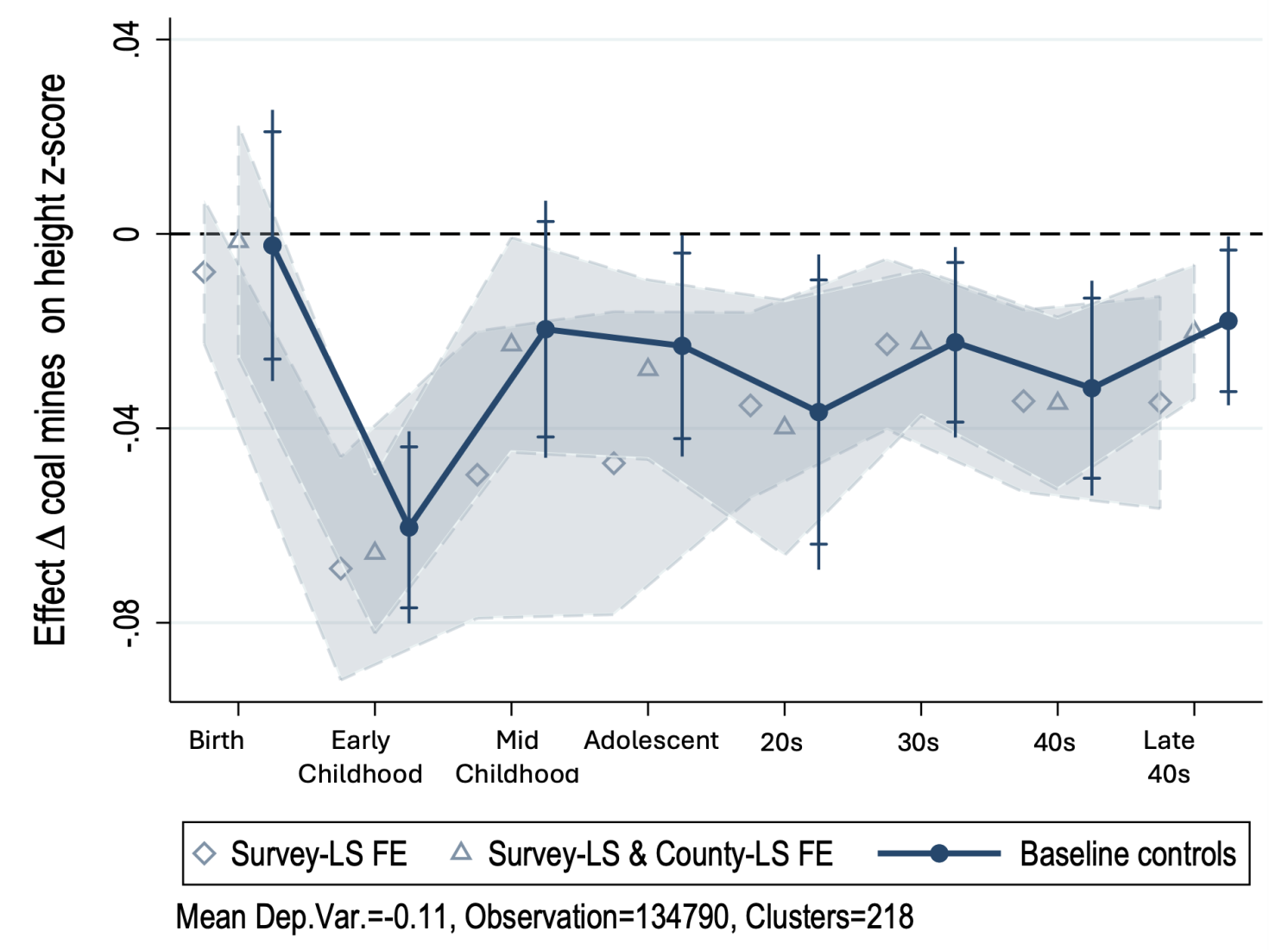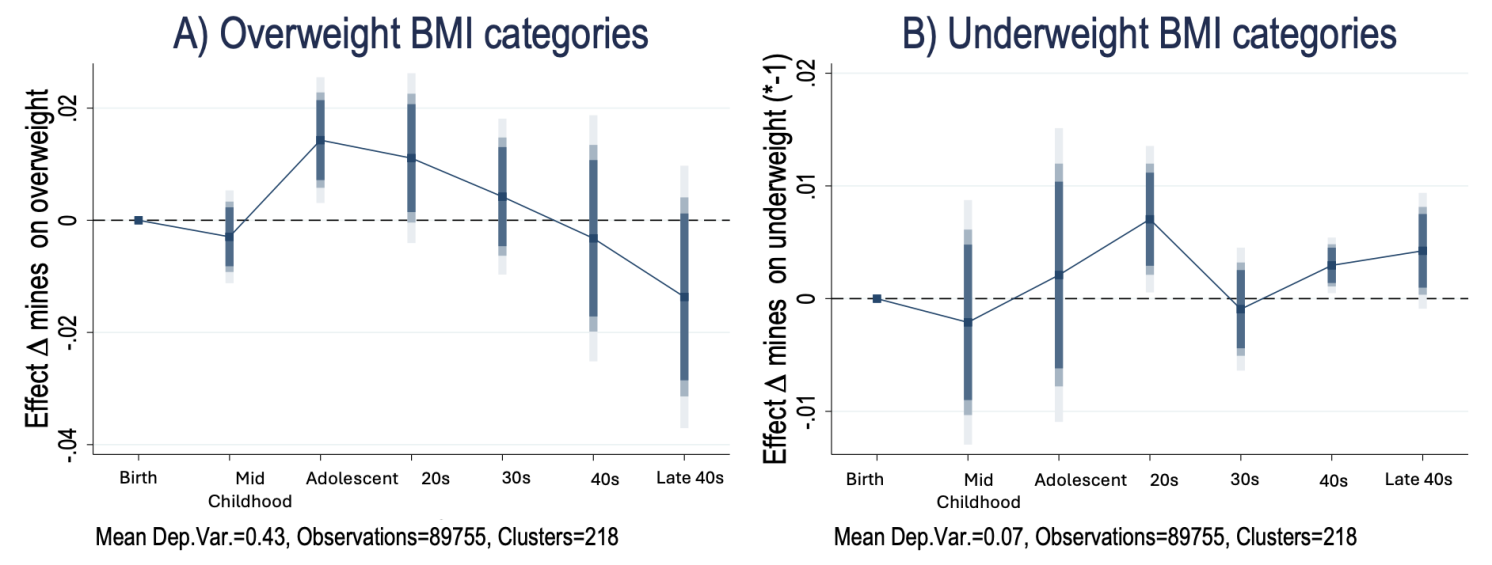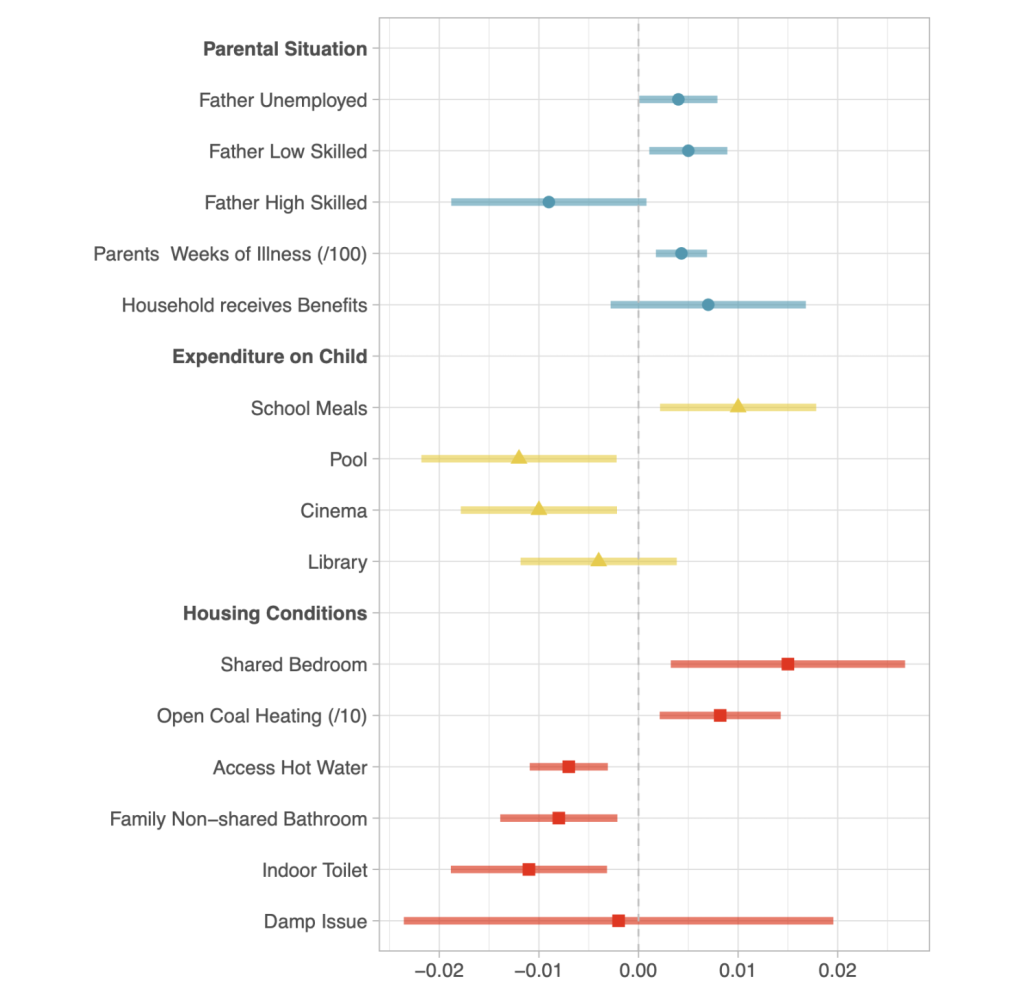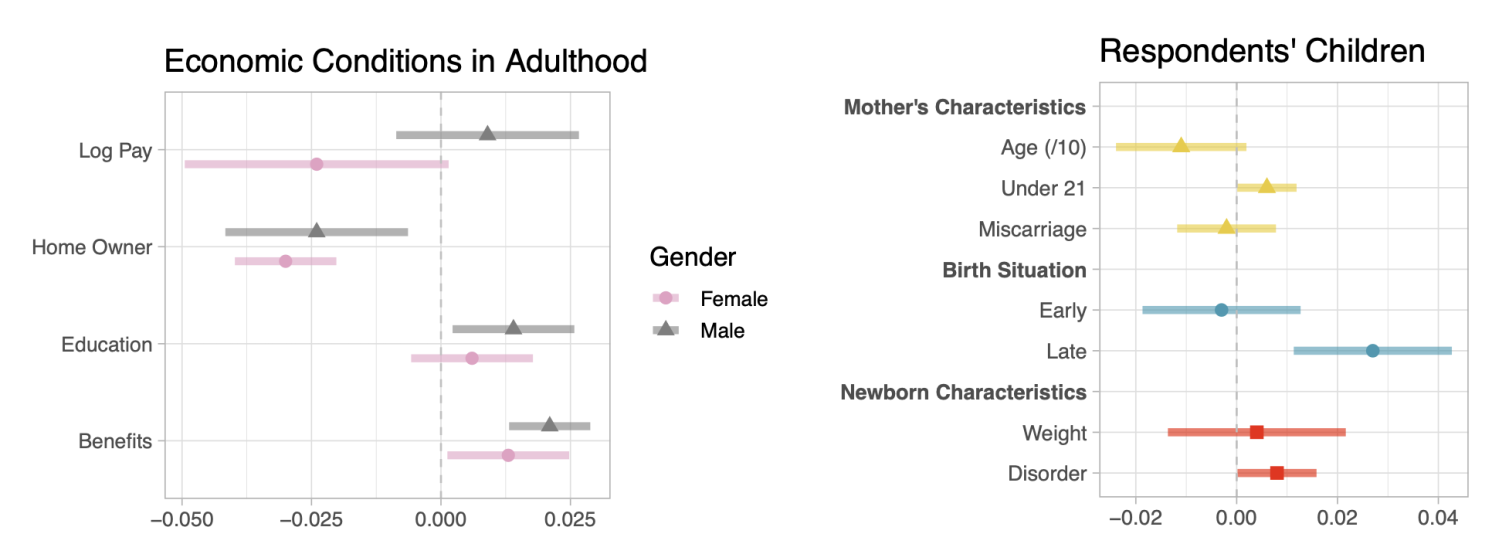This is Naked Capitalism fundraising week. 141 donors have already invested in our efforts to combat corruption and predatory conduct, particularly in the financial realm. Please join us and participate via our donation page, which shows how to give via check, credit card, debit card, PayPal. Clover, or Wise. Read about why we’re doing this fundraiser, what we’ve accomplished in the last year,, and our current goal, strengthening our IT infrastructure.
Yves here. The post below has an extremely important finding: that the damage done by deindustrialization is lasting, extending across generations and even afflicting those able to relocate. This shows that the societal cost of outsourcing and offshoring to health and earning potential. This finding is particularly jarring, since as yours truly has described over many years, at many companies, the financial case for offshoring was often weak and rarely allowed for costs like loss of know-how and increased business risk. A couple of public company executives have told me that even in the face of not-compelling forecasts, they still went ahead with offshoring plans because they knew the announcement would give the stock a pop.
And remember, this study looked at the coal mining industry, with its famously backbreaking and often health-harming labor. But in the UK, these were union jobs, or at least had been union jobs. I was in London on an extended assignment when the Thatcher government was prosecuting its ultimately successful campaign to break the coal miners’ union. It was front page news most days.
The authors find the shock of a pit closure had a huge, negative lifetime impact on children. Yet our putative betters have handwave answers of the “Let them eat training” sort.
By Björn Brey, Assistant Professor Norwegian School of Economics (NHH) and Valeria Rueda, Associate Professor of Economics University Of Nottingham. Originally published at VoxEU
Industrial decline has been directly linked to a worsening of various social and economic indicators. This column examines how the impacts of deindustrialisation in the UK reverberate across generations, finding significant effects on the health, wealth, and living standards of those who grew up under industrial decline. The ability to migrate to wealthier parts of the country is not sufficient to offset these negative effects.
The recent decline in industrial jobs in developed and emerging countries has been linked to worsened health (Case and Deaton 2020, Case 2020), the disintegration of family ties (Autor et al. 2018), and the formation of a geography of political discontent (Autor et al. 2020, Rodríguez-Pose 2018, Rodríguez-Pose et al. 2024). Previously prosperous places are now ‘left behind’, with worse relative living standards, education, and productivity (Moretti 2022, Overman and Xu 2022). Few countries in the developed world have seen such stark increases in regional inequality as the UK, the country with the fastest deindustrialisation in the developed world (Mcann 2019, Stansbury et al. 2023).
In this column, we show that deindustrialisation has persistently affected living standards in the UK. Our recent research documents effects on the health, wealth, and living standards of those who grow up under industrial decline. These effects persist even if people migrate out of affected regions, and they carry over generations (Brey and Rueda 2024). Industrial decline thus not only affects those who work in endangered industries; their children and their grandchildren are also durably worse off. Moreover, the availability of better economic conditions elsewhere does not fully mitigate this impact. Deindustrialisation thus directly threatens equality of opportunities for future generations.
We focus on the collapse of the British coal industry, one of the starkest cases of industrial decline in the 20th century. Economic historians have extensively written about the importance of Britain’s coal in the Industrial Revolution (e.g. Pomeranz 2000, Allen 2009, Wrigley 2010, Fernihough and O’Rourke 2021). Coal mining employed more than 700,000 people by the end of the 1950s. That number halved within a decade, following the industry’s most dramatic shrinkage post WW2 (see Figure 1). Waves of pit closures continued washing over British coal production until its virtual disappearance in the 1990s. Today, the former coalfields consistently rank among areas with the highest levels of deprivation in the country, a matter of sufficient public concern to grant the formation of an all-party parliamentary research group working on policy proposals for these regions (All-Party Parliamentary Group on Coalfield Communities 2023).
Figure 1 Employment in mining in the UK in the twentieth century
Note: See Brey and Rueda (2024) for details.
Our paper estimates the impact of mine closures on those who experienced this economic shock as children. We leverage longitudinal data that follows all children born during a week of 1958 and of 1970 (UK Longitudinal Studies). These data allow us to track people throughout their life and gather information on their parents and their children. We combine them with data produced and shared by the Northern Mine Research Society giving information on all coal mines that have operated in the UK. We can thus compare outcomes, at each life stage, between counties and cohorts, depending on their exposure to mine closures and conditional on a rich set of controls. We ensure that our findings are not driven by unobserved confounders of pit closures and living standards in a variety of ways. In particular, we verify that before the shock, children are comparable: at birth, there is no relation between health outcomes and socioeconomic conditions depending on later exposure to the shock. Moreover, using fixed effects, we account for determinants of living standards that are specific to each county and to each cohort. Finally, we use an instrumental variable that exploits the fact that older pits were closed first.
Finding 1: Individuals Exposed to Pit Closures During Childhood Have Worse Health Throughout Life
Individuals who grow up in counties with a higher ratio of pit closures to population are significantly shorter. Height, a well-established indicator of overall health and living conditions, correlates with economic outcomes in adulthood (e.g. Hatton 2014). Height gaps are strongest in early childhood; despite some catching-up, a significant difference persists into adulthood (see Figure 2). This adult gap – 4% of a z-score, or 0.3 cm – is substantial, comparable to the lower-bound estimated impact of the Irish famine on survivors’ height (Blum et al. 2022).
Figure 2 Effect of pit closures relative to the population on height over life

Note: Coefficients are standardised.
Furthermore, those exposed to pit closures in childhood have BMIs that lean more towards extreme categories, with the effect on overweight categories starting in adolescence to mid-30s and the one on underweight categories starting later in life (see Figure 3). Further analysis reveals that the impact on underweight is stronger for women, while that of overweight is slightly more pronounced for men.
Finally, we also observe worse indicators of general physical health in childhood and higher incidences of a variety of health conditions in adulthood such as diabetes, back pain, and cancer. We also observe worse self-reported mental health in adulthood, including a markedly higher likelihood of states of depression (see Figure 4).
Figure 3 Effect of exposure to pit closure relative to the population on extreme BMI categories over life

Note: Coefficients are standardised.
Figure 4 Effect of exposure to pit closure relative to the population on reporting states of depression over life

Note: Coefficients are standardised.
Finding 2: Pit Closures Are Associated with Worse Living Conditions in Childhood
What can explain the durable impact of pit closure on health? Figure 5 illustrates that mine closures correlate with more deprived living conditions in in mid-childhood (age 10): parents are more likely to have worse employment outcomes, to have taken weeks off work due to illness and to receive benefits; children receive fewer resources from the family, as proxied by leisure expenses and a higher propensity to receive free school meals; finally, their housing conditions are worse following a variety of indicators. In sum, affected children experience economic hardship in childhood, potentially explaining worse health outcomes over life.
Figure 5 Effect of exposure to pit closure relative to the population on living environment of children

Finding 3: Individuals Exposed to Pit closures During Childhood Accumulate Less Wealth as Adults and Their Children Are Less Healthy
How persistent is this effect? Does it affect economic conditions in adulthood? Does it carry through to the next generation? Figure 6 shows that the economic impact carries through adulthood, with respondents less likely to be homeowners and more likely to receive benefits, women also tend to earn less (left-hand panel). Moreover, when they have children, their sons and daughters have a more difficult start in life: the parents have them much earlier (teenage years), and the babies are more likely to be born late and to have had some health condition at birth (right-hand side panel, outcome “Disorder”).
Interestingly, exposure to pit closures in childhood is associated with better education, significantly so for men. This result aligns with previous findings showing that manufacturing and mining industries increase the opportunity cost of education, especially for men (Black et al. 2005, Esposito and Abramson 2021, Franck and Galor 2021). Further research is needed to understand why despite higher male education, exposure to the shock still shapes wealth. Potential explanatory channels are the direct impact of health, inheritance, and assortative matching on the marriage market.
Figure 6 Effect of exposure to pit closure relative to the population of economic conditions in adulthood and children of respondents

Finding 4: Migration is an Imperfect Mitigation Strategy
In the aftermath of local economic shocks, migrating to opportunity is a natural coping strategy. In our case, this was the option favoured by the government and the reason invoked to dismiss any additional targeted support. Longitudinal studies permit tracking movers. We observe three main facts about migration (see Section 5.4 in Brey and Rueda 2024). First, pit closures did not trigger mobility later in life. If anything, the probability of migrating decreases. Although incentives to out-migrate were heightened, the resources to do so decreased, an effect appears to dominate. Second, migration was not accessible to all. Those who migrated were born in families with more educated mothers and fathers or with fewer local ties (younger parents of single-parent households). Finally, the impact of the shock is diminished but not fully reverted after migration. Taken together, our findings suggest that migration was not a perfect solution. Access to it was unequally distributed and those who migrated still see some negative impact.
Lessons
Our research shows that deindustrialisation can durably affect living standards, and the effects are carried across multiple generations. These findings are salient to current policy debates about increasing levels of inequality and poverty in developed countries (e.g. Institute for Fiscal Studies 2024). They highlight that in the absence of any additional support, people born in places that industries have left behind carry health and economic scars that are transmitted to the next generation. These long-lasting consequences are not resolved by access to better opportunities. Few people move, and those who do keep a scar.
See the original post for references


